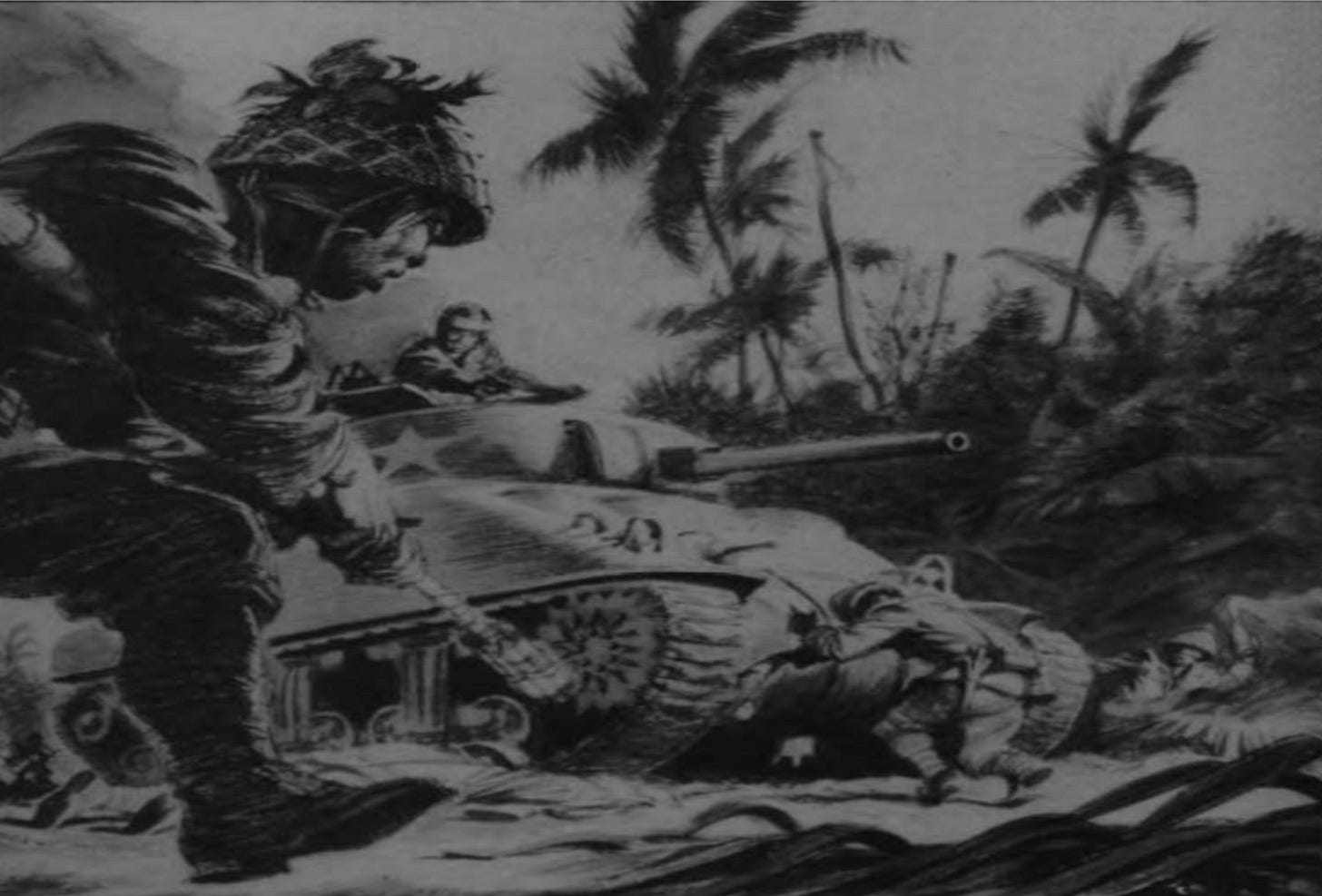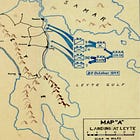CC/RCT 17 (IV)
A decision-forcing case
This post continues a series of decision-forcing cases. With that in mind, I recommend that, before reading the paragraphs that follow, you read (or, better yet, work through) the first four posts in the sequence.
You make local inquiries about the four missing maintenance men. When these fail to provide you with reliable information about their whereabouts, you send a radio message to the regimental S-4, who runs the base at Dulag.
The reply confirms the suspicions that arose the moment you heard of the absence of your maintenance section. Earlier today, you learn, when RCT 17 began its advance towards the west, your four mechanics declined to take part in the movement.
You send a second message to the S-4, asking that the four mechanics be sent forward on the first available transport.
During the night, an enemy patrol attempted to enter the area defended by your provisional rifle company. However, after receiving fire from one of your .50 caliber machine guns, it retired to the north.
In the morning, you learn that the remains of five Japanese soldiers had been found along the defensive perimeter.
At 0800 on 24 October 1944, RCT 17 resumes its movement towards Burauen.
As it had done on the previous day, the sixty-five tanks of the 767th Tank Battalion rang ahead of RCT-17, which advances at the pace of a man on foot.
Each of your cannon platoons marches with the infantry battalion it has been working with. Your headquarters elements march with those of RCT 17. You march with the command post of RCT 17.
Your two ammunition trucks, both fully loaded with ammunition and other supplies, march with the combat trains of the regiment. You are in radio contact with them.
Your maintenance team has yet to report for duty.
At 1030, a radio message from the 767th Tank Battalion reports that forward elements of that unit have entered the outskirts of Burauen.
In the minutes that follow, other messages cause you to imagine the following situation.
Upon entering the built-up area, several American ran over land mines that had been placed on the narrow roads between buildings, thereby losing the ability to move.
When other tanks attempted to recover the disabled vehicles, the dismounted crewmen received small arms fire, and, as a result suffered losses.
Tanks that attempted to bypass the blocked roads ended up in similar situations. One five-tank platoon found is now mired in a bog.
Individual Japanese soldiers made several attempts to destroy American tanks by throwing satchel charges on top of their engine compartments.
The forward elements of RCT 17 are, at present, two hours south of the place where this fight is taking place.
What now, Captain?
Please feel free to use the comments section to propose a solution to this problem. When doing so, please employ a first-person perspective. That is, rather than writing ‘Captain Jensen should’, please begin your response with ‘I would …’
If you are new to decision-forcing cases, you will find much of interest in the following article.








My maintenance team is going to face an investigation and very possibly action under the Articles of War. The action forward is not something I can influence, except to keep my team together and support my platoons with the forward Infantry Battalions.
If these are the facts that they didn’t move forward?
-well absent Force Majure ?
Is this cowardice or were they detained by overwhelming maintenance needed on vital equipment?
What did they have to say for themselves?